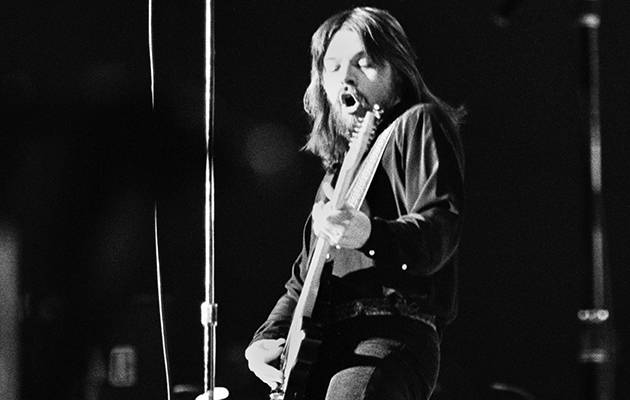Live Bullet
EMI, 1976
The first album to feature Seger’s long-serving Silver Bullet Band, this was recorded over two nights at Detroit’s Cobo Hall in September, 1975. Ostensibly, a stop-gap to allow Seger to finish his Night Moves album, this became one of the best-selling live records of all time.
http://www.youtube.com/watch?v=EzGhc9XRv9Q
I had a bunch of songs for Night Moves. Enough for Punch [Seger’s manager], but not enough for me. So we did Live Bullet, and it was worth it. I found out we were recording it the night of the shows. Punch didn’t want me to know, because he didn’t want us to be nervous. But The Silver Bullet Band had been playing five, six nights a week, every week, so we knew those songs up, down, sideways, and we were tight. It was just a matter of going out there and enjoying ourselves, feeding off the energy of the crowd. I remember about four or five months earlier, we played with Dan Hicks And His Hot Licks. They were supposed to close the show. But Dan had seen us soundcheck earlier, and he said, “I’m going on before you, I’m not following you.” So I started getting a feeling that we were getting better. And at Cobo Hall, it was like, finally, we’re headlining at a proper facility in our own town. We got a couple outtakes from it, too – “Don’t Burn Down The Bridge” by Albert King, “Just Might Want To Come Home”, “Breaking Up Somebody’s Home”. So the whole show didn’t get on the album, but someday you’re going to hear those tracks, too.
____________________
Night Moves
EMI, 1976
Seger’s ninth studio album found him turning 30, and looking back to his youth for inspiration. The title track reached No 4 on the American singles charts, transforming Seger into a national star.
http://www.youtube.com/watch?v=bgOA24hAe60
This was definitely a career-making record. I have a lot of fondness for it. It was inspired by that movie, American Graffiti [1973]. It was set in ’62. That’s when I was in high school, and it was exactly the life that I lived. We wanted to be tough guys, greasers, car guys, hard-to-get with the girls. Sexuality completely out of control. I am always amazed that they play “Night Moves” on the radio. I got away with one there. I got the idea for narrative songwriting from Kris Kristofferson. A key song for me was “Me And Bobby McGee”. You could just tell that he’d lived that. I listened to that song over, and decided I wanted to write a song like that, a song that I’d lived. So everything in “Night Moves” is true. We did have those parties called grassers. A buddy of mine had an upside-down 45 record player in his glove box, and we’d all bring our records and play them on his car battery and dance by the light of the cars. The first use of “Night Moves” was about getting through the awkwardness of sex and all that stuff. The last “Night Moves” was about time passing. First it was a noun and then it was a verb. I wrote that in pieces and it took me six months to finish it. Springsteen helped me immensely, in a way. When I first heard “Jungleland” on Born To Run, I liked how he just stopped it dead, so I decided that’s what I’ll do with “Night Moves”. I had the three verses, I knew how to end it, what I didn’t know was what went in the middle. So I did a double bridge, like Bruce did in “Jungleland”. Of all the songs I’ve written, there wasn’t one that I was positive would be a hit, except this one. Did the girl I wrote it about know it was about her? Yeah, she knows. It’s funny, I hadn’t seen her for 25 years, and we played Eastern Michigan University last November and there she was in the audience. I saw her for a split second and she looked just as good as ever. When Punch wanted me to put the album out, it didn’t even have “Fire Down Below” at that point. That was one of the last songs I wrote for it, which I think is a pretty good song. Randy Newman told me that was his favorite song I ever wrote, and so did Bob Dylan.



